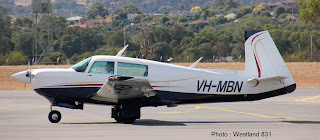Air Chathams' Runway Issues
A follow on effect from the debate about the extension of Wellington Airport and its RESAs is that the issue effects all New Zealand's airports. This is part of the issue for Air Chathams going into Paraparaumu, but also it has an impact on Whakatane...
Whakatane Airport will have an extended safety area of its runway from its current 90 metres to 250m, following a Supreme Court ruling on the safety areas required at major airports in New Zealand. The ruling has impacted Air Chathams’ flights from the airport. The airline was forced to suspend flights from Whakatane by two of its larger aircraft –its 50-seater Convair and its 34-seater Saab – following an Appeal Court ruling in June regarding the safety area, also known as a RESA, of Wellington Airport. Air Chathams currently operates its 18-seat Metroliner and DC3 craft, which carries 28 passengers. The airline flies about 26,000 passengers a year. Whakatane Mayor Tony Bonne said the Ministry of Transport was a 50 percent shareholder of the airport and the council had applied to it to share the costs of the extension. “We already have a business plan in place and getting the ministry’s approval of the plan will be even easier now that the court has upheld the ruling,” he said. Mr Bonne said the extension would cost $250,000. It would be built on council-owned land, but the council would have to work with leaseholders who are using it for grazing. “It will affect airports around New Zealand. A number of airports will have to extend their runways. It is not a major safety issue, but it is an extra safety feature the court has seen fit to impose.” Mr Bonne said the council expected the work to be completed early next year. Earlier this year, the Court of Appeal ruled that airports require a 240m runway safety area if they operate craft carrying more than 30 passengers. Most regional airports have a 90m safety area. The decision was appealed against by Wellington International Airport, the NZ Airports Association and the Civil Aviation Authority. The New Zealand Air Line Pilots Association has welcomed the Appeal Court ruling. The association successfully argued that the Court of Appeal’s decision was correctly decided, and that the appeal should be dismissed. Most aircraft accidents occur during landing and take-off. These include incidents where the aircraft “undershoots” (lands or takes-off short of) or “overruns” the end of the runway, said association president and international pilot Tim Robinson. “The risk of such an incident can be likened to the chance of a severe earthquake. Although the likelihood of an ‘undershoot’ or overrun is low when compared to the total volume of air traffic, the consequences can be catastrophic,” he said. The original decision made by the Court of Appeal considered evidence that a landing overrun incident at Wellington Airport would likely result in the death of all on board. “International aviation authorities including the International Civil Aviation Organisation, the Federal Bureau of Air Safety, the Flight Safety Foundation, and other organisations in the UK and EU say that one critical safety measure to mitigate the risk of an overrun or undershoot incident is to provide a RESA of suitable length.” RESAs must be a cleared and graded area but do not have to be constructed to the same specifications as a runway. Air Chathams general manager Duane Emeny could not be reached at the time of going to press.
Source : https://whakatanebeacon.co.nz/2017/12/airport-to-have-extended-runway/, 29 December 2017
A regional airline supporting the Eastern Bay of Plenty has been stung by a Supreme Court ruling. Air Chathams took over the Eastern Bay of Plenty service when Air NZ stopped flights to Whakatane. Air Chathams took over the regional service in 2015 when Air New Zealand stopped flights to Whakatane, but a ruling in the country's highest court has grounded some of Air Chathams' fleet. Last year the Supreme Court ruled Wellington's airport extension should not have been granted with only a 90-metre safety buffer. And now, where practicable, airports such as Whakatane need to extend their runway end safety area from 90 to 250 metres if they want to support aircraft carrying more than 30 passengers. "Having that restriction placed on Whakatane Airport has certainly had an affect on our business. We'd certainly like to develop that route more," said Air Chathams general manager Duane Emney. Mr Emney says plans Air Chathams had to operate larger capacity aircraft like the Saab 340 hasn't been possible due to the 30-seat restriction. Whakatane airport is jointly owned by the council and the Ministry of Transport. Extending the safety zone will cost $250,000 and the ministry says it's evaluating the business case. Air Chathams has stopped its 50 and 34-seaters from landing at Whakatane Airport until those safety measures are in place. And although Air New Zealand no longer services the region, Whakatane mayor Tony Bonne says it could be doing more to help. "When they did pull out they said they were going to embrace and help the feeder airlines. We're still waiting for that interline agreement with them," Mr Bonne said. But in a statement Air New Zealand told 1 NEWS it doesn't have any interline agreements with domestic carriers. Meanwhile Air Chathams is in a holding pattern, waiting to get its bigger planes servicing the Eastern Bay of Plenty region.
Source : https://www.tvnz.co.nz/one-news/new-zealand/supreme-court-runway-length-ruling-grounds-some-air-chathams-fleet, 29 March 2018






















































.jpg)









.jpg)




